TORONTO (May 21) — Thinking logically, one would have to assume that any overture the Maple Leafs are considering for John Tavares — should he opt to leave the New York Islanders as an unrestricted free agent this summer — is impacted by the situation involving Auston Matthews and Mike Babcock. To wit: If new general manager Kyle Dubas is able to hunt down and sign Tavares (a Toronto native) on July 1, his coach will need to adroitly govern and deploy a pair of legitimate, No. 1 centers in the National Hockey League.
On the surface, it would imply a dream scenario for Babcock — or any coach — to possess such an embarrassment of riches at the key, middle–forward spot. And, for Matthews… to ride shot–gun with one of the most highly–regarded players in the NHL. If Tavares and Matthews each yearn for a Stanley Cup title, they could work together and markedly increase the prospect of Toronto ending the league’s most–interminable drought. If, however, the apparent difficulty involving Matthews and Babcock runs deeper than each man is willing to admit, how would the former endure his coach sharing franchise duties with a long–established star — one that would undoubtedly be awarded the most–lucrative contract on the team?
Presumably, whatever beef Matthews has with Babcock involves diminished responsibility; or the perception thereof. As the defending Calder Trophy winner this past season — and though injury deprived him of 20 starts, or one–quarter of the schedule — Matthews evidently felt he was being underutilized at even–strength and on the powerplay. Which is not to be scoffed at. The truly great players crave responsibility, achievement… and the spotlight derived from being THE man. At the moment, of course, there is no greater example in professional sport than LeBron James. Matthews apparently contends he can improve the Maple Leafs’ lot by playing more minutes. Particularly when the club has an extra man (or two) on the ice. And, the issue, though either downplayed or denied by both parties, carried enough weight that Babcock paid a recent call to the player’s home in Arizona. Not a pleasure–trip, planned in advance. It was strictly business.
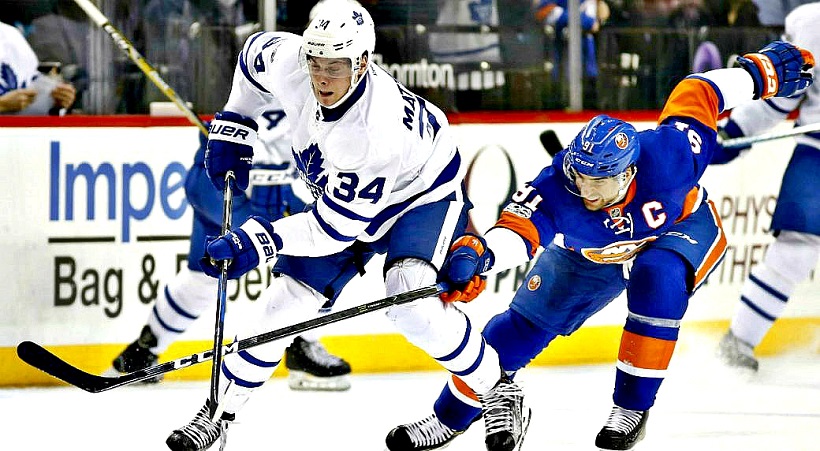
ISLANDERS CAPTAIN JOHN TAVARES CHECKS MAPLE LEAFS STAR AUSTON MATTHEWS DURING A GAME IN BROOKLYN ON FEB. 6, 2017. COULD THEY CO–EXIST WITH MIKE BABCOCK HERE IN TORONTO? KATHY WILLENS THE ASSOCIATED PRESS
These are factors Dubas and Brendan Shanahan must be considering right now… if there is interest in obtaining Tavares. And, not a soul other than those at the top of the covert Leafs should pretend to know the answer. The path of least resistance would be to forgo an attempt at Tavares and try to ensure that Matthews is contented as possible. This would theoretically improve the chance for harmony on and behind the bench. But, would it improve the likelihood of challenging for the Stanley Cup? One would think not, given the abundance and creativity of a Tavares/Matthews tandem. There’s the old adage of strength up the middle being more important than anything in hockey except quality of goaltending. Which the Maple Leafs appear to have in Frederik Andersen, though his playoff record with Toronto, after two years, is uneven.
Neither does it obscure that the Maple Leafs have other issues — none bigger than the lack of an elite defenseman. And, losing plentiful cap space to Tavares will prohibit the chance of securing that essential component. As such, maybe Dubas and Shanahan have already shelved the idea of approaching Tavares. Though, I doubt it. You’ll recall it was only two years ago that the Leafs were prepared to give Steven Stamkos everything but controlling interest in Rogers Communications and Bell Canada Enterprises. He, too, is a forward and natural center. And, Matthews had already been drafted that week. Why, then, would the club not be interested in Tavares, another gifted middle–man? A veteran that would team with Matthews to provide Toronto the best one–two punch at center–ice in the entire league. At least, theoretically.
Which returns me to my initial question: Could the strained Babcock/Matthews alliance withstand such a luxurious “intruder?” Even if it may help to improve results between April and June?
It says here that two stars are better than one.
But, perhaps a binary arrangement cannot work in the Leafs’ current situation.
VEGAS PHENOMENON WITHOUT EQUAL
As stated previously (and commodiously) in this corner, it is the most remarkable story in the history of professional team sports in North America. The Vegas Golden Knights — a first–year expansion club in the National Hockey League — piling up 51 wins and 109 points in the regular season; then rolling through its Conference playoffs in 15 games (three over the minimum) to reach the Stanley Cup final. If you’re a young hockey fan, you’ll be telling your grandchildren about it one day. And, your grandchildren will tell their grand–kids. Why? Because it has never happened before. And, it will never happen again.
Certainly not in the lifetime of any person reading this blog.
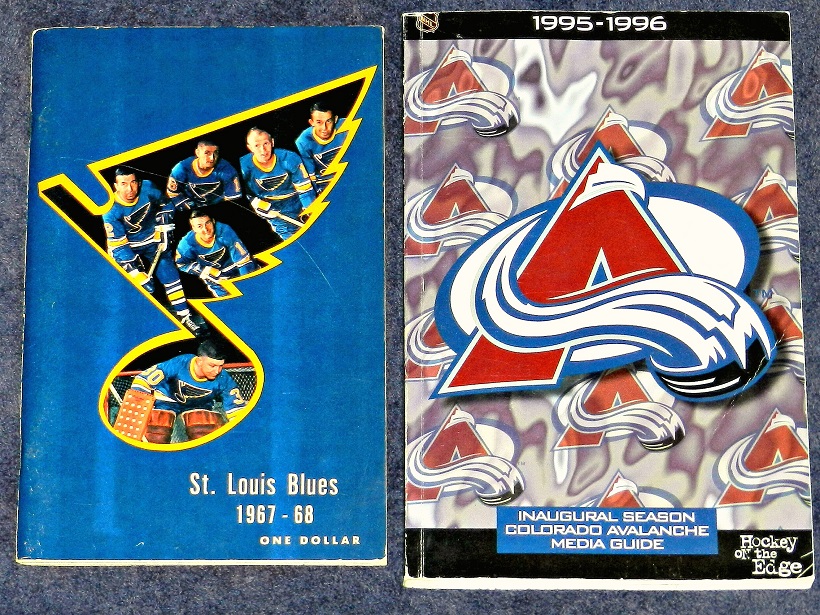
In the NHL’s expansion era, which began when the league doubled to 12 teams for the 1967–68 season, only two clubs have played for the Stanley Cup after their first year in a new city — the ’67–68 St. Louis Blues and 1995–96 Colorado Avalanche (inaugural media guides, above, from my collection). When the league added St. Louis, California, Los Angeles, Philadelphia, Minnesota and Pittsburgh in the original expansion, it formed the West Division for the new clubs while the pre–expansion teams (Boston, Chicago, Detroit, Montreal, New York Rangers, Toronto) formed the East Division. As an olive–branch to the in–coming teams, which were largely inferior, the NHL (for three years) allowed the West Division playoff champion to compete for the Stanley Cup against the East champion. So, in ’67–68, an expansion team was guaranteed to appear in the Cup final. St. Louis, coached by Scotty Bowman, won the West playoffs all three years, but were swept in four consecutive games during the title round — twice by Montreal; once by Boston.
Colorado played for, and won, the Stanley Cup in 1996, the same year it re–located to Denver from Quebec City. But, the old Quebec Nordiques had been in the NHL since 1979–80 and were part of the World Hockey Association (beginning in 1972–73) beforehand. So, the franchise was actually in its 24th season when it moved to the Mile High City. And, only incredible happenstance allowed the Avalanche to prevail.
On Saturday, Dec. 2, 1995, in a bizarre game at the Montreal Forum, Patrick Roy of the Canadiens allowed nine goals against Detroit before rookie coach Mario Tremblay saw fit to replace him, late in the second period, with Pat Jablonski. As he stepped off the ice, humiliated, Roy went behind the bench and told team president Ronald Corey (sitting in the first row) he had played his final game for the Habs. Four days later, on Dec. 6, Roy was traded to the Avalanche in a lop–sided, multi–player deal. He posted a 2.10 goals–against average in 22 playoff games and Colorado won the ’96 Stanley Cup in a four–game sweep over the Florida Panthers; defenseman Uwe Krupp scoring the overtime Cup–winning goal at the old Miami Arena.

THE VEGAS GOLDEN KNIGHTS MOB GOALIE MARC–ANDRE FLEURY AFTER ELIMINATING THE WINNIPEG JETS ON SUNDAY TO WIN THE WESTERN CONFERENCE TITLE IN THEIR FIRST SEASON. CBC/ROGERS
No team, other than Vegas, has ever come close to playing for the Stanley Cup the same year it was formed… and without the guarantee of the old West Division between 1968 and 1970. Florida, coached by current Sportsnet hockey guru Doug MacLean, was quickest to the final of any team prior to Vegas, losing to Colorado in Year 3 (remember the plastic mice?). The Buffalo Sabres (built by ex–Leafs GM Punch Imlach) debuted in 1970–71 and played for the Cup in their fifth season, losing to Philadelphia. But, the expansion teams of that era (Buffalo, Vancouver 1970; Atlanta, New York Islanders 1972; Kansas City, Washington 1974) were guaranteed the first two selections in the NHL draft. As such, Buffalo landed future Hall–of–Fame center Gilbert Perreault and advanced quickly around him. The Islanders drafted Denis Potvin in their second year (1973) and won four consecutive Cups (1980–83) with the Hall–of–Fame blue–liner as captain.
Philadelphia was the first of the expansion teams to win the Cup — in its seventh season (1973–74). Edmonton prevailed in its fifth NHL campaign (1983–84), but without having to draft Wayne Gretzky and after toiling for seven years in the WHA. So, again, there simply is no parallel to the Vegas phenomenon.
Never before.
And, never again.
EMAIL: HOWARDLBERGER@GMAIL.COM








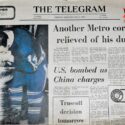






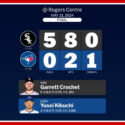


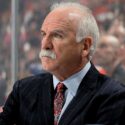




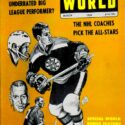







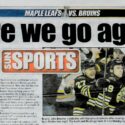




North America yes… but still not quite as magical as Leicester City in EPL at 5000/1. Also, Vegas was 200/1 to win at start of season. St Louis Rams 300/1 to win Super Bowl the year they won it with supermarket shelf stocker Kurt Warner
But, neither were first-year teams, just formed, Fence Dog. “Fence Dog!!” he says.
The top d-man on Vegas is McNabb making $2.5 mil a year. Which is less than the #4 d-man Hainsey at $3 mil on the Leafs. So my question is do you still think it is impossible for the Leafs to win in the playoffs with one of those Doughty types making $10 mil a year?
Yes. Worst example possible. What Vegas is doing is a longer shot than getting hit by lightning. At least some poor people have endured that. The Vegas story is a first… and last.